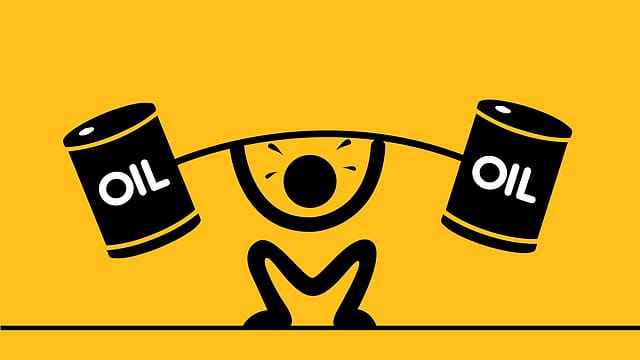2024 Ahoy! Crude to determine health of economy
ADVERTISEMENT

Just a week back, the government slashed windfall tax on crude oil from ₹5,000 per tonne to ₹1,300 per tonne. The move is meant to help Indian refiners export fuels to tap high-return markets. But going forward, any spike in global crude prices will force the government to reintroduce similar curbs to maintain price stability in the Indian market. In FY23, India spent $157.5 billion on importing 232.7 million tonnes of crude oil.
The government imposed the windfall tax on crude oil producers and extended the levy on export of fuels in July 2022 to increase fuel availability in the domestic market as it would reduce the prices. It was also the time that Indian refiners were getting Russian crude at a discounted price of up to 20%, due to U.S. sanctions on Russia post its war in Ukraine.
Global geopolitical events have serious impact on crude prices and India is at the receiving end as the second largest crude importer after China. When the OPEC+ members cut crude production to jack up prices a year back, Indian government increased the import of discounted Russian crude to keep petroleum prices low in the country. Russian oil share in India’s import basket jumped to around 25% from just 1% because of the deep discount of around $15-20 a barrel.
January 2026
Netflix, which has been in India for a decade, has successfully struck a balance between high-class premium content and pricing that attracts a range of customers. Find out how the U.S. streaming giant evolved in India, plus an exclusive interview with CEO Ted Sarandos. Also read about the Best Investments for 2026, and how rising growth and easing inflation will come in handy for finance minister Nirmala Sitharaman as she prepares Budget 2026.
High crude prices have a direct impact on India's foreign exchange outgo, fiscal deficit and inflation as the country imports around 85% of its annual oil requirement, majorly from the Middle East. Indian refiners like Reliance Industries (RIL), Indian Oil Corporation, Hindustan Petroleum Corp and Bharat Petroleum Corp will have to spend more to buy the expensive crude. Maintaining the gross refining margin (GRM) amid fluctuations will be a herculean task for the refiners.
Some companies benefit from price rise also. The high price scenario will help exploration and production companies like ONGC and Cairn India to bulk up their bottomline. Rising fuel prices have a direct bearing on industries like cement and automobile.
Centre had in the past reduced central taxes to lower consumer prices of petrol, diesel and LPG. However, it is not an option for the government now as it has been struggling to bridge the fiscal deficit and control rising inflation. High fuel prices will escalate the cost of essential goods and affect consumer spending. It will, in turn, have a huge impact on the government's income from excise duty. Another trouble is the weakening rupee against the dollar. The rupee fell to a record low of 85 in 2023, compared to pre-Covid levels of around 70.
Indian economy showed remarkable resilience in 2023 with strong GDP growth and robust GST collection. However, inflation remained above the 4% target set by the Reserve Bank of India (RBI). Retail inflation spiked in November to a three-month high of 5.5% from 4.87% in October, and 5.02% in September.
RBI kept the inflation forecast unchanged in its last policy meeting as it projected Consumer Price Index (CPI)-based inflation, or retail inflation, at 5.4% for FY24. CPI inflation for Q1FY25 is projected at 5.2%, for Q2 at 4% and for Q3 at 4.7%.
Brent crude price is now at $80 a barrel at present. Any increase in the price above $100 will have a direct impact on inflation targets.
Fiscal deficit is another concern. It is likely to breach the target of 5.9% in FY24 due to higher expenditure on rural job guarantee scheme NREGA and major subsidies, and lower than budgeted nominal gross domestic product (GDP), says India Ratings. The projected shortfall in government’s revenue compared with its spending is 10 basis points higher than the budgetary estimate.
